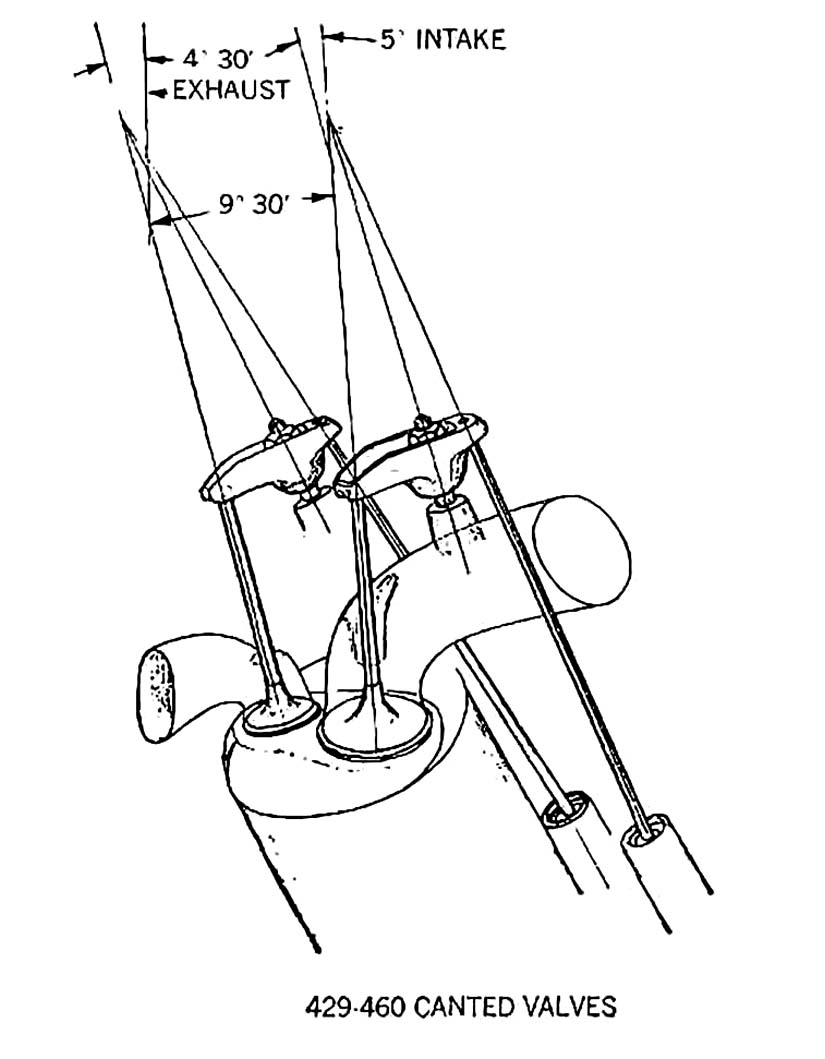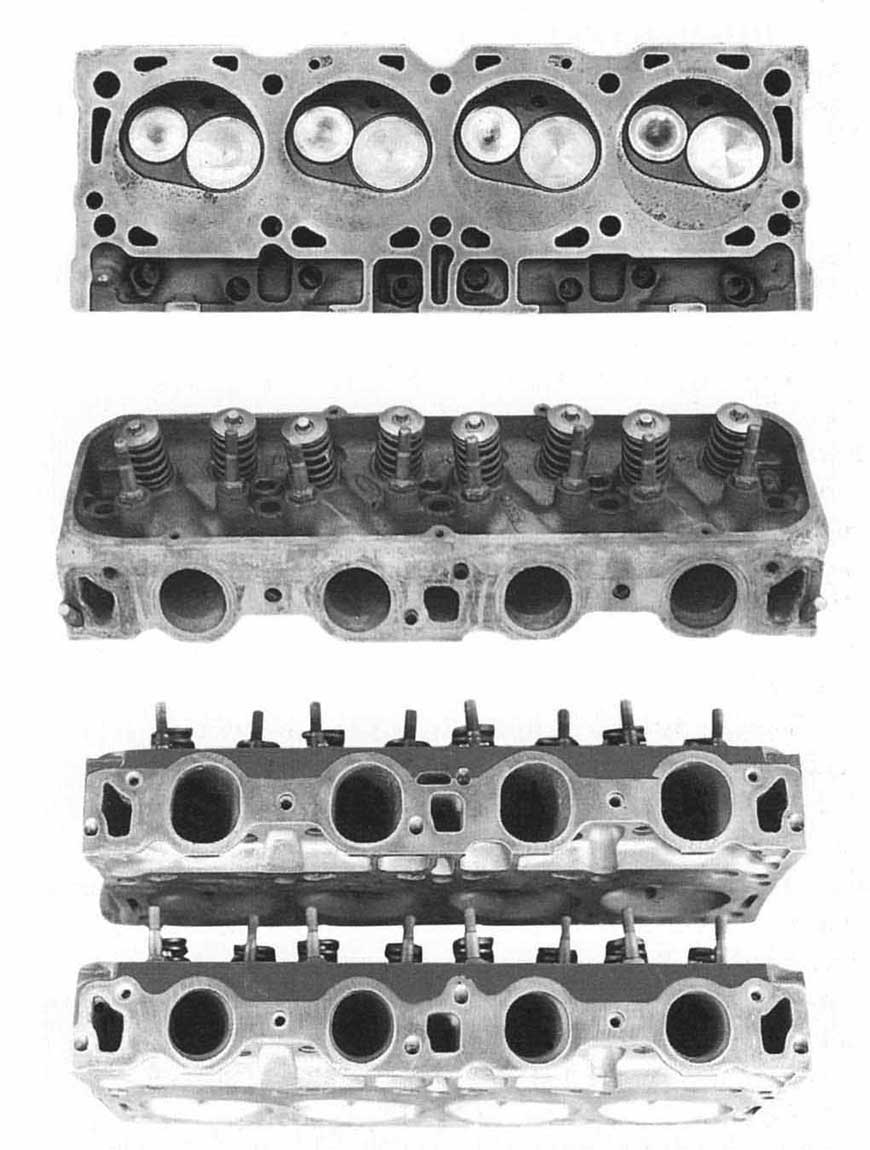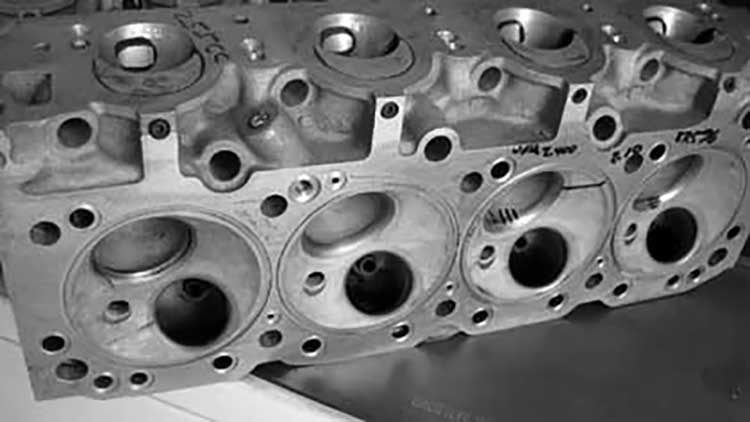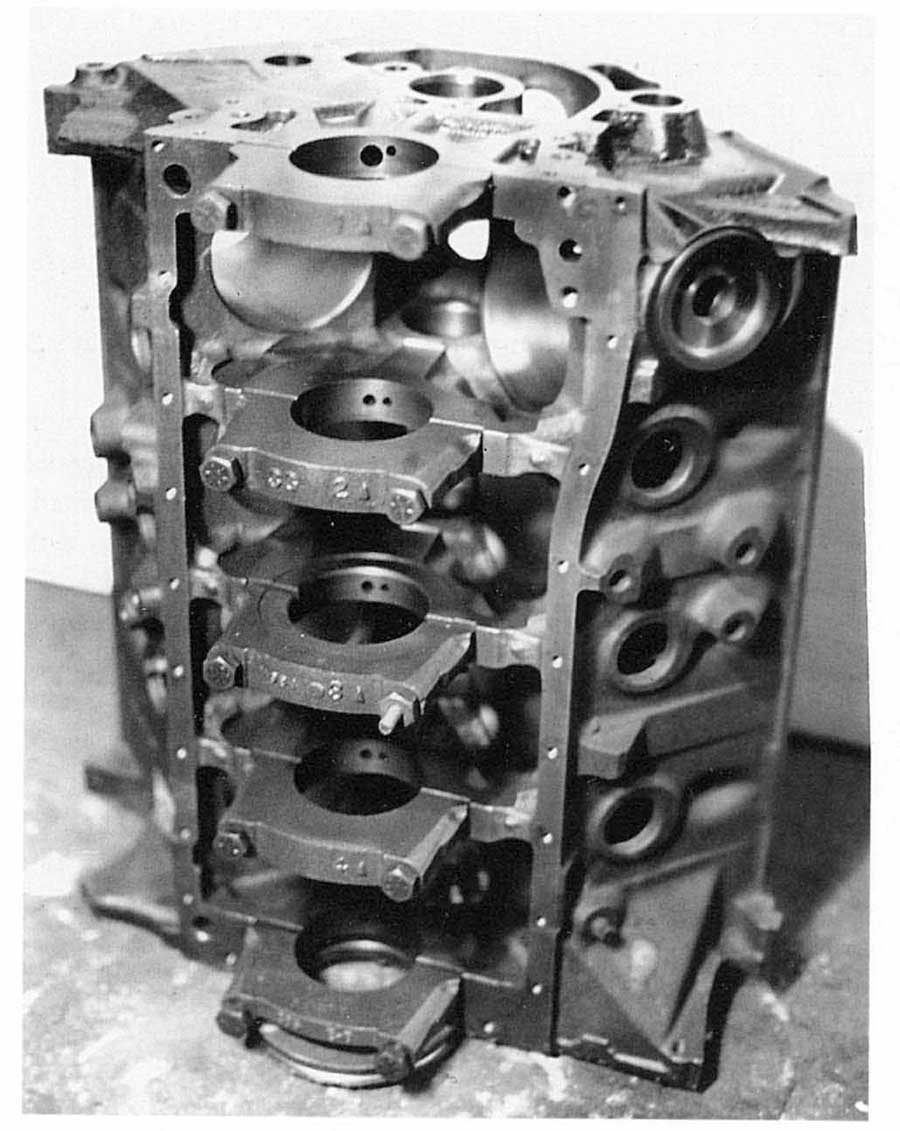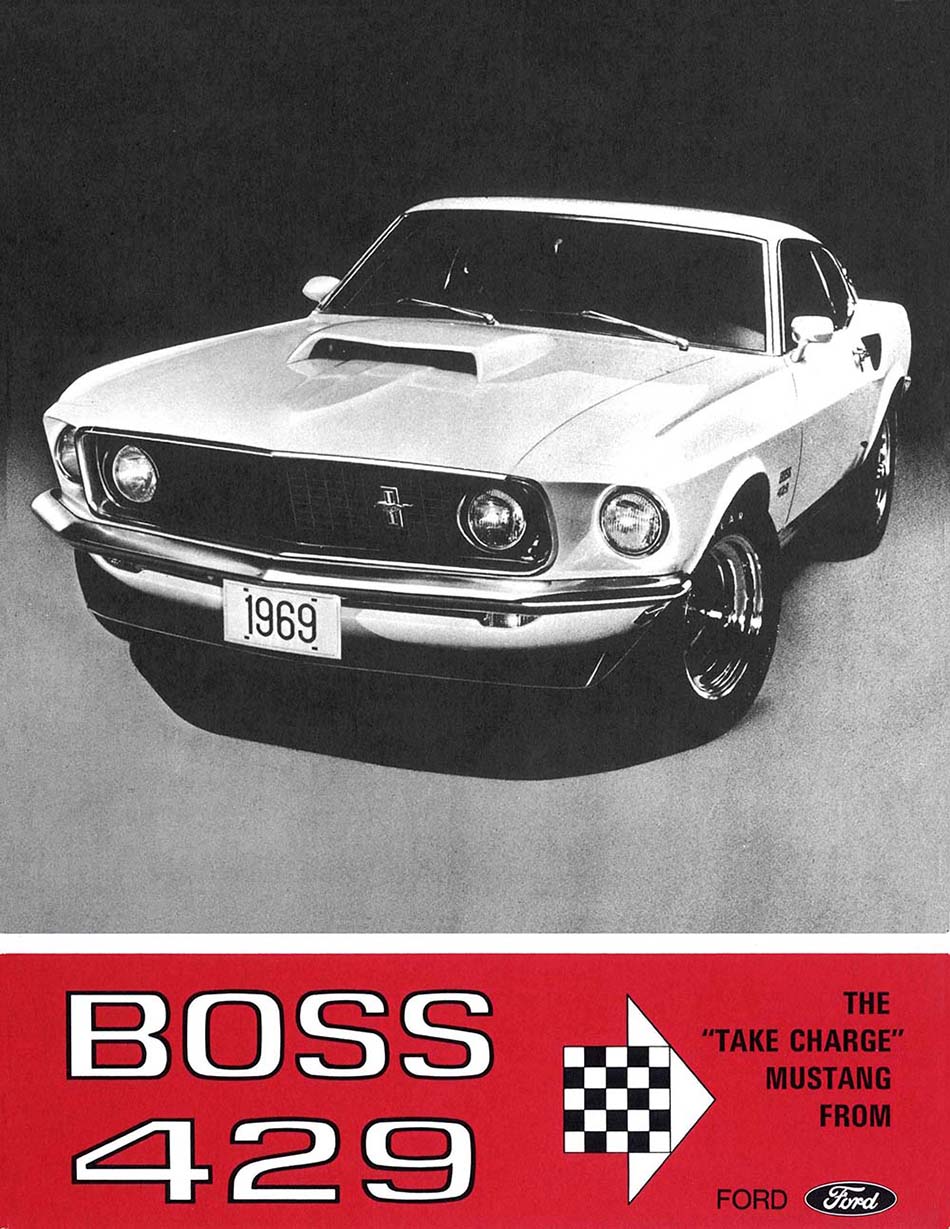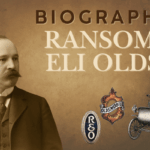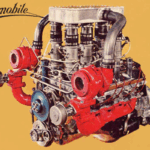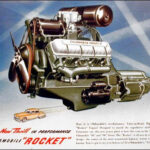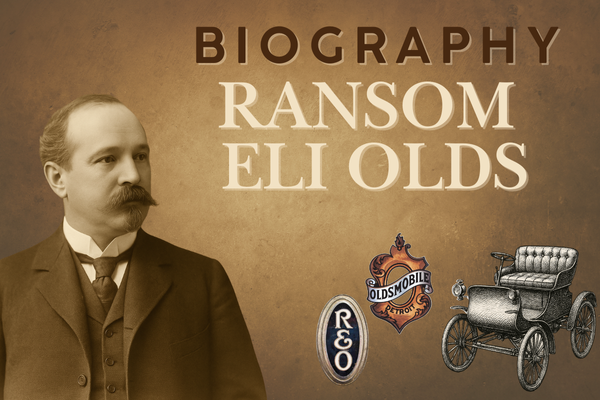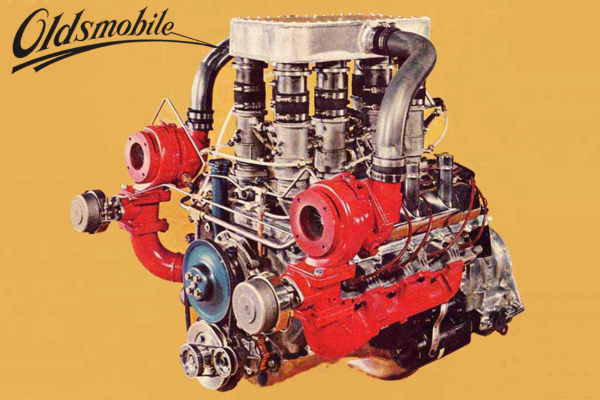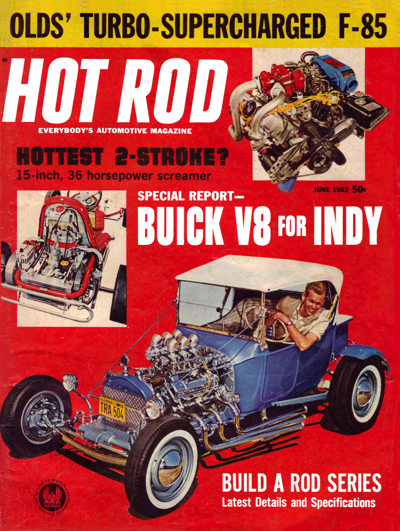Introduction to the 385 Series
Introduced in 1968, Ford’s 385-series V8 engines came to replace the venerable FE-series big-block engines by 1970. This new series marked a significant shift in Ford’s engine design philosophy, particularly with its innovative canted-valve “poly-angle” cylinder heads, which were a first for Ford and resembled those used in Chevrolet’s big-block engines. These heads, with their unique valve configuration, provided several advantages, including improved flow and enhanced durability.
Innovative Cylinder Head Design
Canted-Valve Heads
The canted-valve design of the 385-series engines was revolutionary. The intake and exhaust valves were tilted in two planes relative to the cylinder’s centerline, which facilitated better airflow and reduced shrouding effects from adjacent cylinder walls. Specifically, the intake valves were tilted 5 degrees off vertical, while the exhaust valves were tilted 4 degrees and 30 minutes in the opposite direction. In the lateral plane, the intake valves were angled at about 13 degrees and the exhaust valves at about 16 degrees toward the engine’s center.
This configuration allowed for more space in the head, providing room for round passages and improving the engine’s cooling by positioning coolant passages closer to the valve stems. The exhaust manifolds for the base 429 and 460 engines were made of cast iron and exited at the rear of the engine, further optimizing the engine’s performance and durability.
Distinct Engine Displacements
429 and 460 CID Variants
The 385 series engines were produced in two main displacements: 429 and 460 cubic inches. A 370 CID version was also made for light-duty trucks, featuring a 4.050″ bore and the 429’s 3.59″ stroke, but otherwise maintaining the same base design as the 429.
The 429 CID engine was particularly notable for its performance, aligning with NASCAR’s 7-liter maximum engine size rule. This engine was designed with a focus on light weight, small package size, and the ability to handle potential increases in displacement. The thin-wall, skirtless block design incorporated lessons from racing, which later influenced the oiling system used in the 302-351 Cleveland engines.
The 460 CID engine, while sharing the same 4.36” bore as the 429, used a longer stroke of 3.85” to achieve its displacement. Both engines featured a nodular iron crankshaft running in five main bearings, providing a robust and reliable foundation for their performance capabilities.
Performance and Variants
Base 429 and 460 Engines
The base 429 engine, known as the “Thunder Jet 429,” first appeared in the 1968 Ford Thunderbird. The 460 CID version debuted in the 1968 Lincoln, simply labeled as “460 CID.” These engines were used in a variety of Ford and Mercury full-size cars and intermediates from 1968 to 1973.
Base versions of these engines featured hydraulic-lifter camshafts, small-port heads, and relatively small valves compared to their performance-oriented counterparts. The base 429’s valves measured 2.08” for the intake and 1.66” for the exhaust. These engines also came with cast-iron intake manifolds and either a 2-barrel or 4-barrel Ford Autolite carburetor.
In 1968, the 429 V8 was considered a premium engine, rated at 360 horsepower with a four-barrel carburetor. The compression ratios varied from 10.5 to 11.0:1 from 1968 to 1970, standardizing at 10.5:1 in 1971, then dropping to 8.5:1 in 1972 and 8.0:1 in 1973. Despite changes in rating methods and compression ratios, the engine remained powerful and reliable throughout its production.
Cobra Jet and Super Cobra Jet 429
The 429 engine also spawned high-performance variants: the 429 Cobra Jet (CJ) and the 429 Super Cobra Jet (SCJ). Available from 1970 to 1971, these engines were equipped with four-bolt-main engine blocks, larger ports, and bigger valves than the base 429. The CJ and SCJ engines used different camshafts—hydraulic for the CJ and mechanical for the SCJ—enhancing their performance potential.
The 429 CJ and SCJ engines also featured unique intake manifolds and carburetors. The CJ used a Rochester Quadrajet carburetor on a spread-bore intake manifold, while the SCJ used a Holley 780-cfm carburetor on a similar manifold. These engines were designed for serious performance, making them favorites among muscle car enthusiasts.
The Ultimate Boss 429
The Boss 429 was the pinnacle of the 385 series. Developed for NASCAR, this engine had to be installed in at least 500 street cars to qualify for racing, leading to its use in the 1969-1970 Boss 429 Mustang. This engine was radically different from other 429s, featuring massive aluminum cylinder heads with modified hemispherical combustion chambers, which Ford called “crescent chambers.”
The Boss 429’s heads did not use conventional gaskets but instead relied on rubber Viton O-rings and special copper sealing rings. The engine block featured four-bolt main-bearing caps and a revised oiling system, making it robust enough to handle the rigors of high-rpm NASCAR racing. The street version of the Boss 429 had a 10.5:1 compression ratio, forged-aluminum pistons, and an aluminum dual-plane intake manifold with a 735-cfm Holley carburetor.
NASCAR and Beyond
Ford’s 429 engine saw extensive use in NASCAR, with various configurations tailored to meet the demands of different tracks. These engines often featured larger intake valves, lighter magnesium valve covers, and specialized intake manifolds made from aluminum or magnesium. The ultimate race versions even used all-aluminum or magnesium blocks, significantly reducing weight and increasing performance.
The Legacy of the 460
The 460 CID engine continued to power Ford, Lincoln, and Mercury vehicles well beyond the 385 series’ initial run. From 1968 to 1996, this engine was a staple in Ford’s lineup, powering everything from luxury cars to trucks and vans. The 460 engines maintained the same basic architecture as the 429, including two-bolt main-bearing caps, cast-iron crankshafts, and hydraulic-lifter camshafts, ensuring their reliability and performance over nearly three decades.
Conclusion
The Ford 385-series V8 engines represent a significant chapter in Ford’s performance history. From the base 429 and 460 engines to the high-performance Cobra Jets and the legendary Boss 429, these engines showcased innovative design, robust construction, and impressive performance. Whether on the street or the track, the 385 series engines left a lasting legacy that continues to be celebrated by automotive enthusiasts and historians alike.
Ford 385 Image5
Boss 429 heads – note the hemispherical combustion chambers. The sides are filled in to increase compression.
Ford 385 Image7
The 429-460 block was a sturdy piece. The Base block has two-bolt mains, but the CJ, SCJ and Boss blocks used various 2- and 4-bold configurations since the block webs would support them.
Ford 385 Image9
Of course, the Boss 429 was considered the ultimate Mustang when it was released in 1969.




